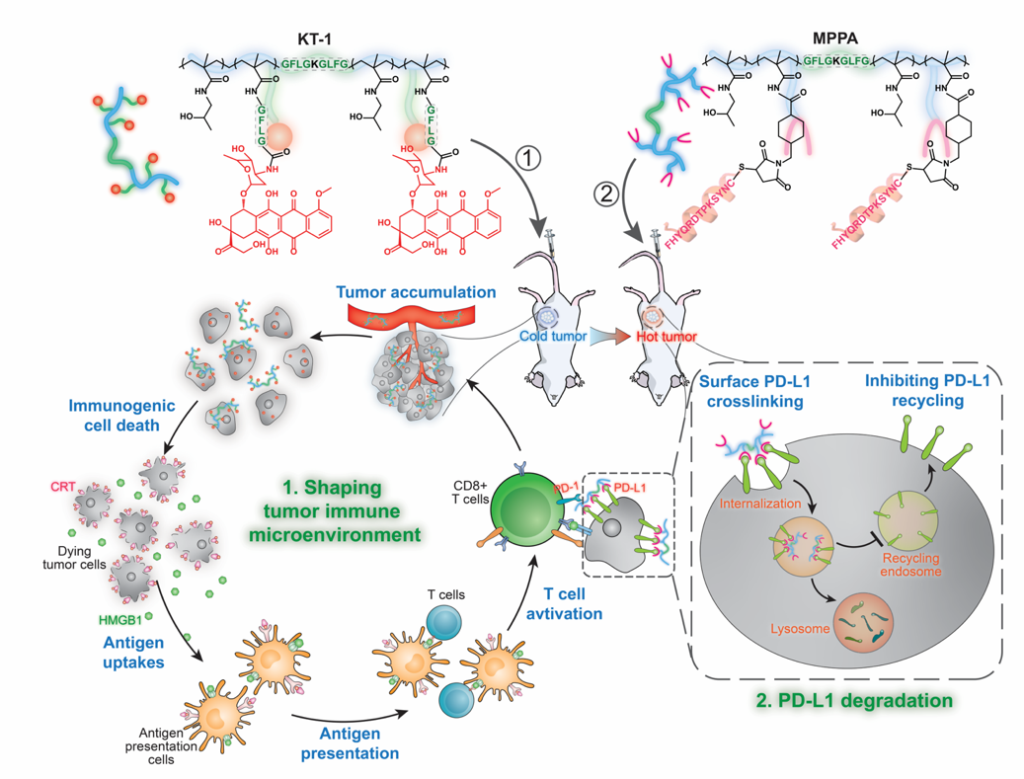To develop methods for the treatment of immunosuppressive cancers we combine polymer-drug conjugates with polymer–checkpoint inhibitor conjugates. Newly designed backbone degradable HPMA [N-(2-hydroxypropyl)methacrylamide] copolymer–anticancer drug conjugates possess long-circulating pharmacokinetics and enhanced antitumor activities, while keeping excellent biocompatibility. The conjugates induce immunogenic cell death in murine cancer models and convert “cold” tumors to “hot” ones that are susceptible to PD-L1 degradation immunotherapy. Original design of a new multivalent PD-L1 antagonist not only acts as a traditional checkpoint inhibitor, but mediates the surface crosslinking of PD-L1, biases its subcellular fate to lysosomes for degradation, and exhibits persistent suppression. Pre-clinical evaluation of the leading HPMA copolymer-epirubicin conjugate (KT-1) is being executed at the Nanotechnology Characterization Laboratory at NCI.
The mechanism of combined action of KT-1 with multivalent polymer peptide antagonist (MPPA) of PD-L1 is shown on the Figure below:

KT-1 facilitates tumor targeting of immunogenic drug to enhance its direct antitumor activity as well as induction of immunogenic cell death to “heat up” the antitumor immunity. The second conjugate (MPPA) mediates the surface crosslinking of PD-L1, biases its recycling to lysosome degradation, and exhibits persistent suppression. This two-pronged approach recruits T cells into tumors and spurs T cell responses durably [1].
